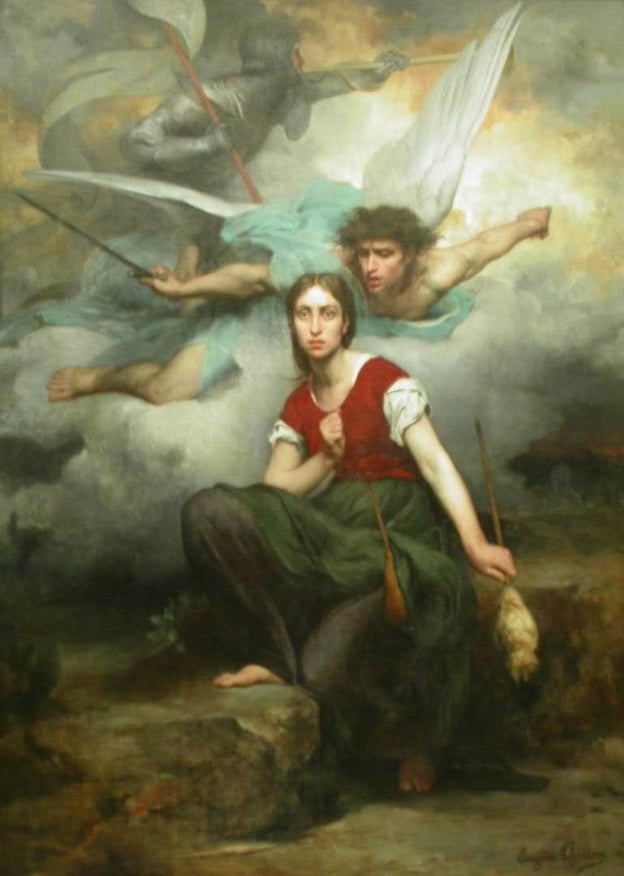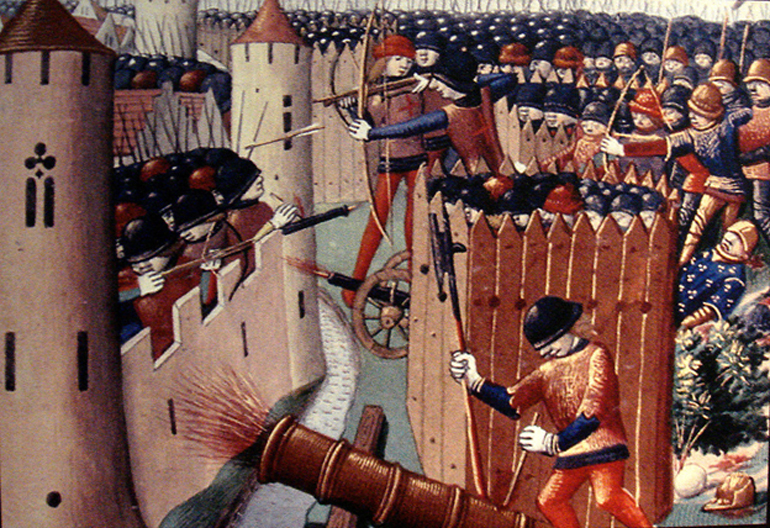
The Maiden of France: Joan of Arc and the Siege of Orléans
France, embroiled in a war with England in a struggle over the French throne during the Hundred Years' War, would find a savior who in turn was a heretic to the English. This sinner and saint was a woman by the name of Joan of Arc. While most people know she was burned at the stake at Vieux Marche in Rouen, most forgotten are her military adventures against the English.
The Peasant Girl
In 1412, Joan of Arc (or Jeanne d'Arc) was born in the village of Domremy located in the Duchy of Bar, France. She was the daughter of poor farmers by the names of Jacques d' Arc and his wife Isabelle. Like the upbringing on any farm, Joan learned primarily agricultural skills. She was said to have been a hardworking and religious child.

Jeanne d'Arc, by Eugène Thirion (1876). The portrait depicts Joan of Arc's awe upon receiving a vision from the Archangel Michael. (Public Domain)
Joan's fame came when she said she began to hear voice from God, which she believed instructed her to expel the English and to have the Dauphin, Charles Valois (Crown Prince of France) crowned king of France. Incredibly, Joan would get her chance to meet with the Dauphin Charles VII when the situation changed for the worse in 1429.
- Speaking of Angels and Saints: The Story of Joan of Arc
- Stolen Ring Owned by Joan of Arc Finally Returned to France
- Gilles de Rais – violent predator or political victim?
In 1429, the city of Orleans, loyal to the French crown, had been under siege by the English for over a year. With Orleans heavily under attack, the uncle of Henry VI, Duke of Bedford and the English regent, advanced with a force towards the Duchy of Bar, which at that time was under the rule of Rene, the brother-in-law of Charles Valois.

Siege of Orléans, 1429. (Public Domain)
Divine Revelation
Seeing that the English advance seemed unstable, the young Joan in the village of Domremy, approached the garrison commander, Robert de Baudricourt, and informed him that voices told her to rescue Orleans. She demanded that he assemble some men, provide some resources, and take her to meet with the Dauphin at Chinon. The garrison commander scoffed at the idea of a peasant girl standing before the French Royal Court, and sent her away. Not dissuaded, she petitioned Baudricourt’s soldiers, and making accurate predictions about the outcomes of battles (apparently proving divine revelation), was eventually escorted to the Royal Court.
Joan arrived at Chinon on 23 February 1429. Right before Joan arrived, Charles is said to have disguised himself to see if she would be able to identify him, and to test her ‘powers’ as a prophetess, but it was to no avail, because bowed before him, and said, "God give you a happy life, sweet King!"




